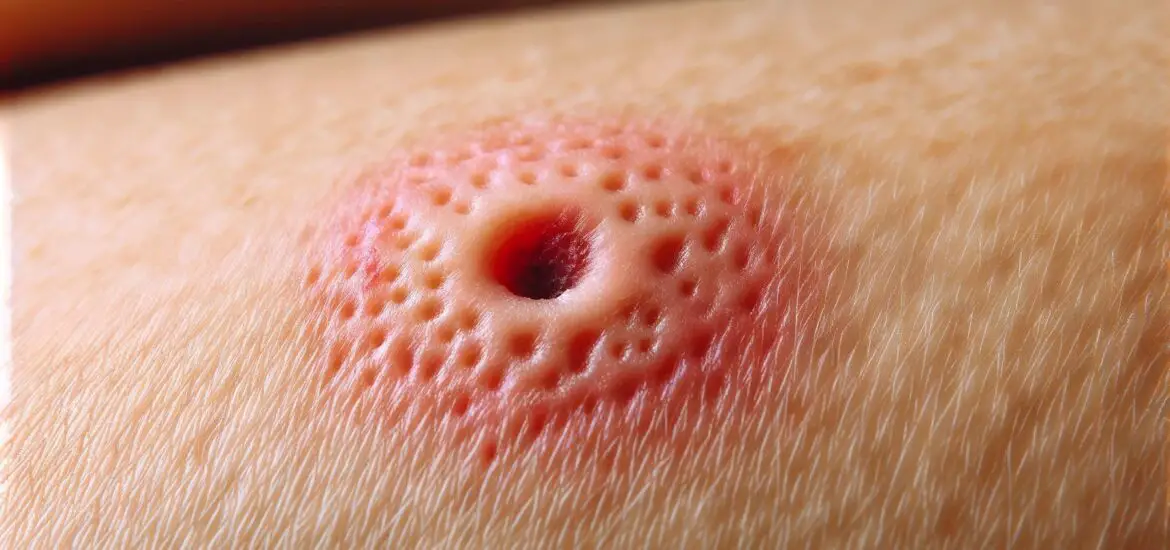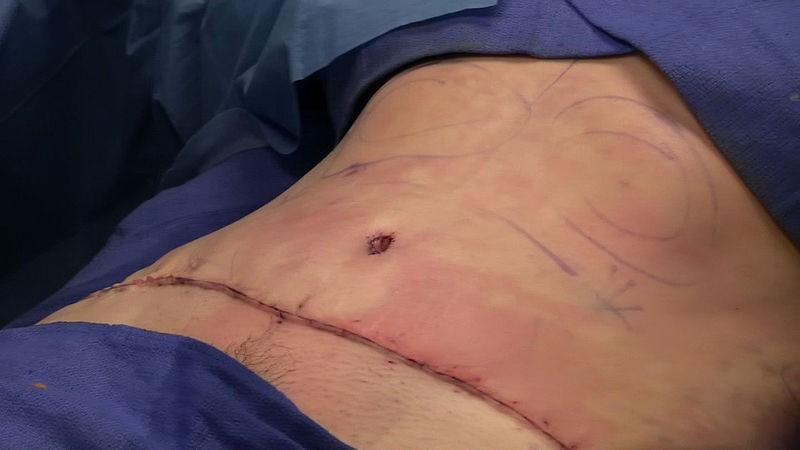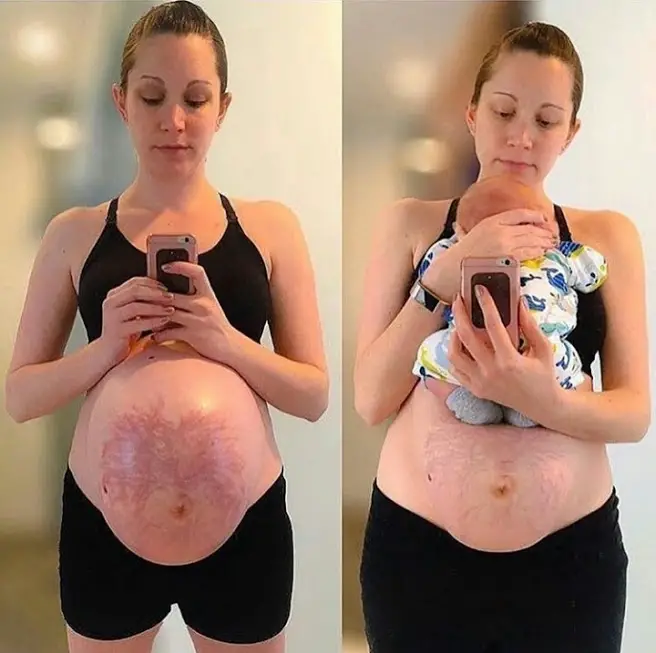This comprehensive guide will reveal why hole in skin after laser tattoo removal occurs, and how to prevent and treat this uncommon but concerning complication.

Table of Contents
Understanding the Cause of Hole in Skin After Laser Tattoo Removal
When undergoing laser tattoo removal, the laser targets tattoo ink with intense light bursts. These bursts break the ink into smaller particles, which are then eliminated by the body’s immune system. However, the laser can also affect the surrounding skin tissue in some cases. If the laser’s intensity is too high or the skin is particularly sensitive, it can lead to small wounds or holes.
Factors like the type of laser used, the frequency and duration of pulses, the density and color of the tattoo ink, and the individual’s skin type and healing capacity play a significant role in this. For example, certain ink colors require more intense laser settings to break down, increasing the risk of skin damage. Similarly, areas with thinner skin, such as the ankles or wrists, are more liable to this complication.
Immediate Aftercare Post-Procedure
Right after the laser tattoo removal session, the treated area might be red, swollen, and tender. Immediate aftercare is crucial to prevent infection and promote healing. This usually includes gently cleansing the area with mild soap and water. This is followed by applying an antibiotic ointment to reduce the risk of infection.
You can confirm with your skin care specialist if you can use this Equate First Aid Triple Antibiotic Ointment from Walmart.
The area should be covered with a non-stick, sterile bandage to protect it from bacteria and irritation. It’s vital to avoid sun exposure as UV rays can impair healing and increase the risk of scarring.
The patient should also avoid soaking the area (like in baths or swimming pools) and refrain from picking or scratching. Compliance with these instructions is important even if scabs form, as this can worsen the wound and increase infection risk.
Identifying Signs of Complications
It is essential to monitor the treated area for signs of complications closely. Normal healing involves some redness and swelling, but if these symptoms worsen or don’t improve, it could indicate an infection or other problems.
Signs to watch for include increased pain, spreading redness, excessive swelling, warmth around the area, discharge or pus, and fever. If a hole develops in the skin, this requires immediate attention. The hole may appear as a small, circular wound, potentially with exposed deeper layers of skin.
Seeking Professional Help
If you notice any concerning symptoms, including the development of a hole, it’s crucial to contact a healthcare professional immediately. This could be the specialist who performed the laser treatment or a dermatologist.
They will assess the wound to determine the severity and provide guidance on treatment. This might include prescribing antibiotics for an infection or recommending specific wound care products. Or in severe cases, they might refer you for more specialized treatment. They may also take a swab of the area to test for bacterial infection, which will help in determining the appropriate antibiotic.
Long-Term Care and Healing
Long-term care is essential for proper healing. Continue to keep the area clean and apply recommended ointments or creams. You may need to change the bandage regularly to keep the wound clean and dry.
Avoid using harsh chemicals, fragrances, or other irritants on the area. Be gentle when cleaning and avoid rubbing or scratching the area.
As the wound heals, it’s also important to maintain a healthy lifestyle to support skin regeneration. This includes staying hydrated and eating a balanced diet rich in vitamins and minerals. Furthermore, avoid smoking and excessive alcohol consumption, as these can impair healing.
Check out these other articles…
Skin Discoloration After Laser Tattoo Removal: Easy Guide
How Does Skin Look After Laser Tattoo Removal: Easy Guide
Dark Skin After Laser Tattoo Removal: Easy Care Guide
What Happens to the Skin After Laser Tattoo Removal?
How to Care for Your Tattoo After Laser Removal: Easy Guide
How Long Does Skin Take to Heal After Laser Tattoo Removal?
Skin Healing After Laser Tattoo Removal: Comprehensive Guide
Understanding Healing Time and Scar Prevention
The healing time for skin holes after laser tattoo removal can vary greatly depending on the size and depth of the wound. Individual factors like overall health, skin type, and age also play a huge role. Generally, smaller wounds may heal within a few weeks, while larger or deeper ones can take several months.
Once the wound has closed, scar prevention becomes a key focus. Silicone gel sheets or scar creams can be effective in reducing scar formation. They work by hydrating the scar and reducing the production of excess collagen.
You can check out these scar creams available at Walmart.
Gentle massage of the healed area with a moisturizer can also improve skin texture and appearance. This should only be done once the wound has fully closed. However, you need the approval of your healthcare professional to use it in this manner.
If scarring is a significant concern, treatments such as laser therapy or microneedling can be discussed with a dermatologist.
Preventing Future Complications
Preventing future complications involves a careful approach to any additional laser tattoo removal sessions. Discuss with your specialist the possibility of adjusting the laser settings or technique to reduce the risk of skin damage. This could include using a lower intensity, increasing the time between sessions, or using additional cooling methods during the procedure.
It’s also crucial to ensure that the person performing the procedure is qualified and experienced. Ask about their training, experience specifically with tattoo removal, and how they handle complications.
In addition, following pre-treatment advice, such as avoiding sun exposure and certain medications, can help prepare your skin for the procedure and reduce the risk of complications.

